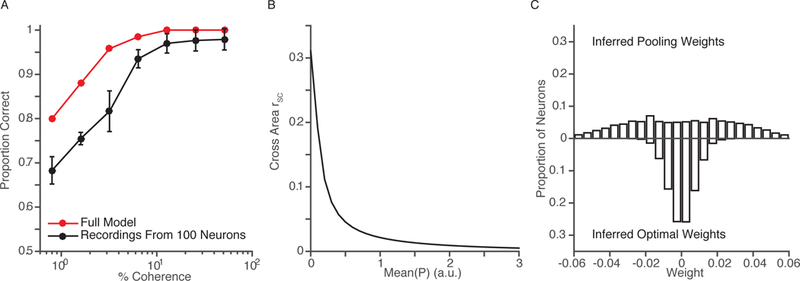Figure 3.

Insights from a set of simple simulations. (a) Proportion of correct discriminations of the full population (red) and of subsets of 100 selected neurons (black) using weights inferred from the simulation’s choices (which are based on the full population). Error bars represent 95% confidence intervals based on 1,000 random draws (without replacement) of 100 neurons. The full population outperforms the subsets, but performance using small populations covaries with that of the full population. If this property is true in real neuronal populations, modest improvements in the sensory information that the animals use should be observable from recordings of realistic numbers of recorded neurons. (b) When neuronal responses are based on linear combinations of inputs that are either shared or private to each neuron, correlations between simulated populations are inversely related to the strength of private inputs. In this scenario, changes in the proportion of private and shared inputs could be observed by measuring rSC between areas. (c) Differences in weighting functions can be detected using recordings from small populations. The distribution of inferred weights of a conventional pooling model (top) is bimodal and broad. The distribution of inferred weights from a model that uses an optimal readout scheme (bottom) is narrow and unimodal.
